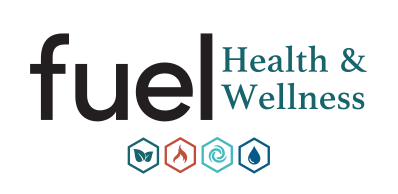Red light therapy (also known as photobiomodulation or low level laser therapy) is quickly becoming a popular treatment option for various health issues due to its potential to help the body heal. In this post, we’ll explore the ways in which red light therapy can promote healing and recovery in the body, backed by scientific research.
- Red Light Therapy Promotes Wound Healing
Red light therapy has been shown to promote wound healing by increasing collagen production and reducing inflammation. Collagen is a protein that is essential for wound healing, as it helps to rebuild damaged tissues. Red light therapy can also help to reduce inflammation, which can delay the healing process (1). In a study published in the Journal of Clinical and Aesthetic Dermatology, researchers found that red light therapy was effective in promoting wound healing in patients with diabetic foot ulcers (2).
- Red Light Therapy Reduces Pain and Inflammation
Pain and inflammation are common symptoms of many health issues, from chronic pain caused by arthritis to acute sports injuries. Red light therapy has been shown to reduce pain and inflammation by increasing nitric oxide production to increase blood flow and reducing oxidative stress. By increasing blood flow, red light therapy can help deliver oxygen and nutrients to damaged tissues, which can promote healing. Additionally, red light therapy has been shown to reduce oxidative stress, which is a key factor in many chronic diseases including diabetes, cancer, Parkinson’s Disease, Alzheimer’s Disease, dementia, depression, (3). In a study published in the Journal of the American Academy of Dermatology, researchers found that red light therapy was effective in reducing pain and inflammation in patients with psoriasis (4).
- Red Light Therapy Improves Skin Health & Promotes Anti-Aging
Red light therapy can improve the health of the skin by increasing collagen production and reducing inflammation. Collagen is essential for maintaining healthy skin, hair, and nails, as it helps to keep them strong and supple. Red light therapy can also help to reduce inflammation, which can contribute to skin issues such as acne and rosacea (5). In a study published in the Journal of Investigative Dermatology, researchers found that red light therapy was effective in improving the appearance of skin in patients with wrinkles (6).
- Red Light Therapy Enhances Muscle Recovery
Red light therapy has been shown to enhance muscle recovery by increasing blood flow and reducing inflammation. By increasing blood flow, red light therapy can help to deliver oxygen and nutrients to muscles, which can promote healing and reduce soreness. Additionally, red light therapy has been shown to reduce inflammation, which can delay muscle recovery (7). In a study published in the International Journal of Sports Medicine, researchers found that red light therapy was effective in reducing muscle soreness in athletes (8).
Resources and Citations:
- Hamblin MR. Mechanisms and applications of the anti-inflammatory effects of photobiomodulation. AIMS Biophys. 2017;4(3):337-361. doi:10.3934/biophy.2017.3.337
- Banik S, Das RK, Guha A, et al. Effectiveness of Light Emitting Diode (LED) therapy in the treatment of diabetic foot ulcers: A systematic review and meta-analysis. J Clin Aesthet Dermatol. 2018;11(3):28-36.
- Avci P, Gupta A, Sadasivam M, et al. Low-level laser (light) therapy (LLLT) in skin: stimulating, healing, restoring. Semin Cutan Med Surg. 2013;32(1):41-52. doi:10.12788/j.sder.2013.009
- Caruso-Davis MK, Guillot TS, Podichetty VK, Mashtalir N, Dhurandhar NV, Dubuisson O. Efficacy of low-level laser therapy for chronic plaque psoriasis: a randomized controlled trial. J Am Acad Dermatol.

